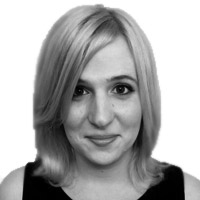“Simon” is not gay but he used to spend several hours a day worrying that he might be.
His fear of being gay led him to avoid physical contact with other men at work, where he dodged one-on-one meetings with men, and at home, where he avoided attending his children’s sporting events so that he wouldn’t have to interact with coaches and dads.
Simon suffered from a sexual orientation obsession, a fairly common but under-examined manifestation of obsessive-compulsive disorder (OCD) that revolves around the fear of being—or being perceived as—gay.
Simon’s case study is the focus of a 2011 article co-authored by Dr. Monnica T. Williams, a clinical psychologist and the leading expert on sexual orientation-themed OCD (SO-OCD). In a new study published in the April issue of Archives of Sexual Behavior, Dr. Williams sheds even more light on this confusing and often debilitating mental disorder.
For Dr. Williams, SO-OCD presents a unique clinical challenge because it can easily be mistaken for internalized homophobia, in which someone who is actually lesbian, gay, or bisexual suffers personal and social anxiety over his or her sexual orientation. Those who suffer from SO-OCD, by contrast, do not take pleasure in homosexual thoughts but nonetheless have an obsessive need to reassure themselves that they do not find them pleasurable.
These reassurances can take the form of time-consuming “checking” rituals that SO-OCD sufferers use to verify their true sexual orientation. In Dr. Williams’s clinical experience, these rituals include mentally picturing homosexual acts and checking for sexual stimulation, asking a loved one to verbally verify one’s heterosexuality, or looking at homosexual imagery to ensure that it does not induce arousal.
One of Dr. Williams’s patients, for example, would watch gay porn even though he could not strictly achieve orgasm through it, switch to thinking about a woman, and, in his words: “Boom, I finish, and I know I am straight.”
Some male sufferers of SO-OCD may even be so hounded by obsessive thoughts that they become “desperate to find out if they would enjoy a homosexual experience,” causing them to seek out unwanted—and ultimately upsetting—same-sex encounters.
Those who experience internalized homophobia or other forms of anxiety over being lesbian, gay, or bisexual, on the other hand, would not experience the activities in these rituals as inherently distressing. In her practice, for instance, Dr. Williams once encountered a middle-aged man who was concerned he might have SO-OCD due to “ongoing doubts about whether he should leave his wife and move to Miami to start a new life as an openly gay man.”
Someone with SO-OCD would find this entire thought pattern intrusive but, in this case, he felt distress only about ending the marriage while “the idea of meeting someone new of the same sex filled him with excitement.”
But automatically assuming that all patients with SO-OCD-like symptoms want to abscond to a Miami gay bar can have disastrous clinical consequences that “increase distress and damage rapport” between patient and the therapist.
One man Dr. Williams studied had reportedly been told by a previous therapist—who did not recognize his SO-OCD—that he “should try to be with a man” because “everybody is bisexual.” He then experienced suicidal ideation for five months and, eventually, “couldn’t be with any person of the same sex alone in the same room” or watch television.
To the untrained eye, this man’s behavior might be mistaken for intense homophobia. But as Dr. Williams and her co-authors point out, an individual with SO-OCD “may or may not have negative feelings toward LGBT individuals” on a sociopolitical or interpersonal level. Lesbian, gay, and bisexual people can even experience SO-OCD about heterosexual thoughts, although this possibility seems less frequent.
The obsessive thought patterns of OCD can intersect with certain social norms, then, but they do not necessarily imply a personal endorsement of those norms. SO-OCD is a mental disorder, not a pathological form of bigotry. SO-OCD sufferers have a lot more in common with Jack Nicholson avoiding cracks in the sidewalk in As Good as It Gets than they do with the Westboro Baptist Church.
SO-OCD also occurs with surprising frequency given how scant the research is on the subject. The National Alliance on Mental Illness (NAMI) estimates that about 2 percent of the U.S. population receives an OCD diagnosis at some point. And out of individuals with an OCD diagnosis, Dr. Williams observes, 9.9 percent of one sample reported “past or present obsessions related to homosexuality” and 8 percent of another reported “current sexual orientation obsessions.”
Based on those figures, it’s possible that over half a million people in the U.S. currently experience sexual orientation obsessions—a little less than the population of Wyoming but still a sizable group.
Dr. Williams’s own sample of over 1,000 subjects paints one of the first general portraits of this population: Over a quarter of the entire sample had already been diagnosed with OCD. Most subjects who responded to the online survey were heterosexual men but 25 percent were female. There is additional evidence to suggest that women may suffer more acutely from SO-OCD even though they are less likely to have it.
And although sufferers of SO-OCD are a relatively small group, the distress they experience is a serious cause for concern. Dr. Williams’s team found that over 90 percent of their sample experienced “levels of distress ranging from ‘much’ to ‘suicidal.’”
For those who receive treatment, however, this distress can be alleviated using proven therapeutic techniques. As Dr. Williams notes in her team’s 2011 study of Simon, treatment for SO-OCD “follows the same structure as any other form of OCD”: expose the patient to his or her fears and interrupt the rituals that accompany them.
Over the course of 17 treatment sessions, Simon was given various “homework” assignments including looking at men’s fitness magazines, watching Milk and Brokeback Mountain, going to a gay bar, and talking to the coaches of his daughter’s softball team. In some treatment sessions, he watched gay porn with the reminder that “a certain amount of sexual arousal” is normal for people of all orientations when viewing explicit imagery.
Throughout these activities, he was encouraged to “agree” with his obsessive thoughts about being gay in order to expose their irrationality instead of instantly reassuring himself that they were incorrect. When he worried that he was gay throughout the treatment, for example, he mentally told himself, “Yes, I am just gay.”
In any other context, this treatment could be mistaken for conversion therapy—an unethical attempt to change someone’s sexual orientation—but, for Simon, it alleviated his symptoms by allowing him to unmask and dismiss his fears. His depression cleared away and his quality of life score rose dramatically post-treatment.
But Simon’s success story aside, Dr. Williams and her co-authors remain concerned that the larger population of SO-OCD sufferers do not have access to this knowledge or these treatments.
“[The] level of distress experienced by those with SO-OCD demands a response from the research and clinical community,” they write.
For a potentially debilitating form of mental illness that can so easily be confused with internalized homophobia or outright bigotry, some clarity does seem to be in order.





